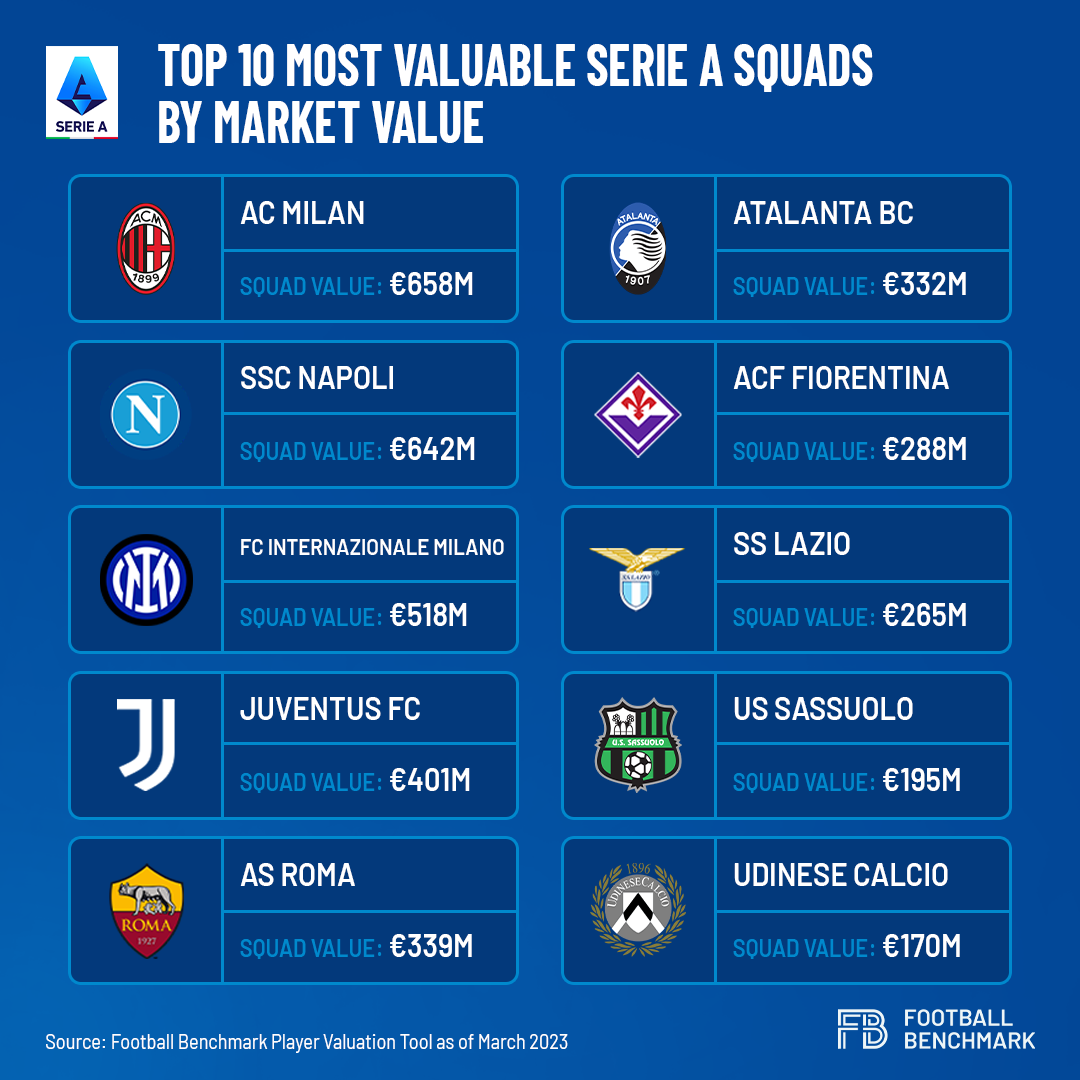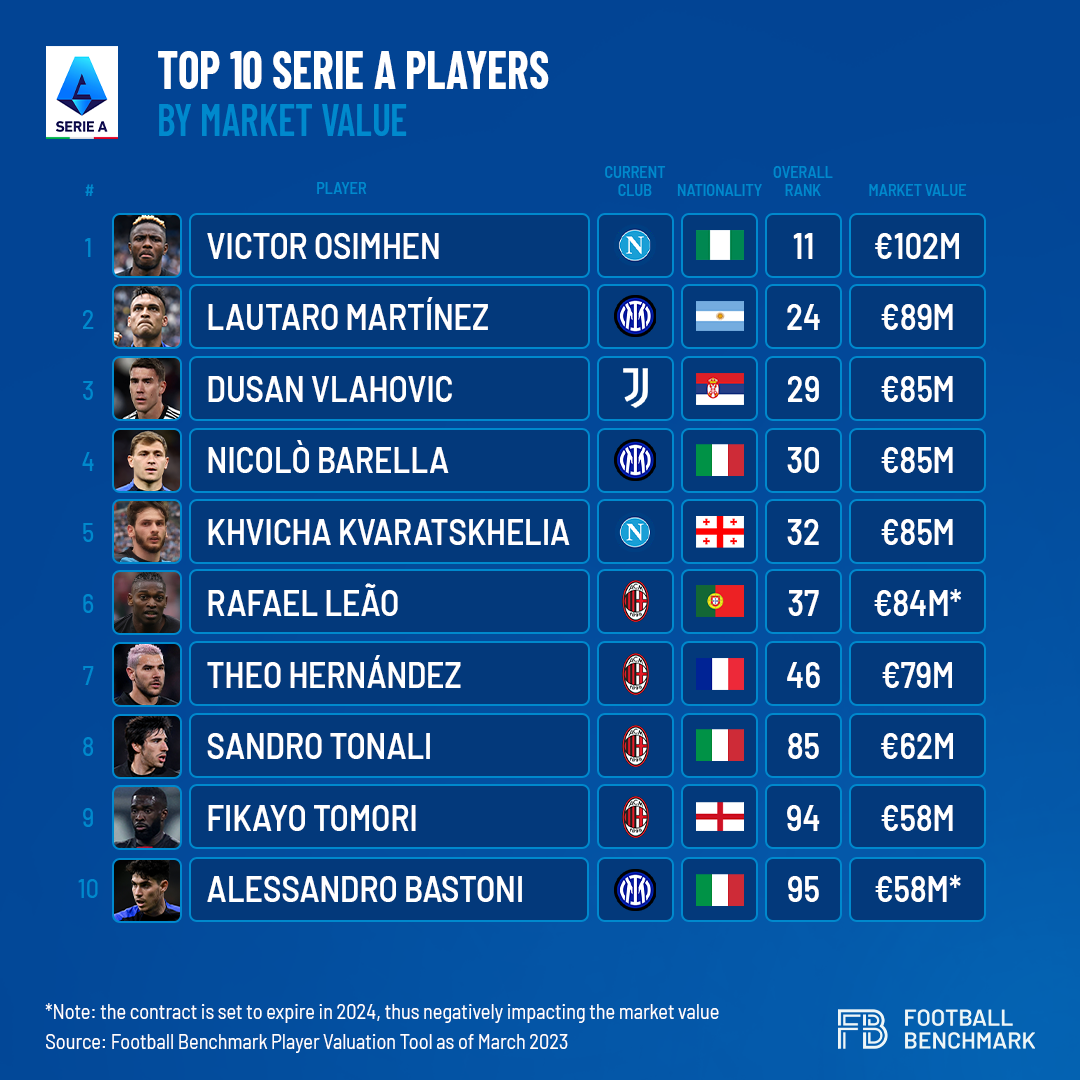In a rematch of the 2002/03 matchup, AC Milan and FC Internazionale Milano will face each other again in the UEFA Champions League semifinals next week. Twenty years ago, the Rossoneri emerged victorious thanks to the ‘away goals’ rule, after drawing 0-0 and 1-1, and went on to win the final against Juventus FC in another Italian clash. Both teams have come a long way since then, with the overall football landscape and ownership of the two clubs having changed drastically.
AC Milan enjoyed their most recent peak international success between 2002/03 and 2006/07, when they reached the UCL final three times and lifted the trophy twice. On the other hand, FC Inter’s successful campaign came in 2009/10, when they won the Triplete under José Mourinho.
In recent years, both clubs have faced unsatisfactory results on the pitch, before winning the Scudetto in 2021/22 and 2020/21, respectively. AC Milan underwent three ownership changes in the past two decades, from Silvio Berlusconi to the recent takeover by RedBird Capital Partners in 2022. Meanwhile, the Massimo Moratti era has come to an end for Inter too, with the club now owned by the Suning Group.
Besides the Milan-based clubs, other Serie A teams have shown remarkable results in UEFA competitions this season, reaching the semifinals: Juventus FC and AS Roma in the Europa League, while ACF Fiorentina in the Europa Conference League. For the first time in their history, five Italian teams have reached such latter stages of UEFA competitions. This achievement is even more noticeable considering the relatively poor results of the Italian clubs on the international stage in the last decade, with no more than one club reaching the semifinals in the previous 10 seasons, except for 2014/15.
.png)
However, the domestic landscape tells a slightly different story. SSC Napoli, eliminated in the UCL quarterfinals by AC Milan, have been dominating the league and are set to win the Serie A title after 33 years.
Napoli's success has been unexpected, given the departure of three key players during the summer, namely Kalidou Koulibaly, Dries Mertens and Lorenzo Insigne, replaced by lesser-known ones such as Min-jae Kim and Khvicha Kvaratskhelia, who have shown themselves to be crucial additions and the main factors contributing to a successful ride to the title.
While SS Lazio, who follow Napoli in the standings, are no longer in contention in UEFA competitions, Inter, AC Milan, Juventus, Roma and Atalanta are fighting for a UCL spot in the top four; on the other hand, Fiorentina seem out of contention and might focus on winning the UECL, which would grant an automatic place in next year’s UEL.
The surprising Serie A season is revealed in the numbers. Squad valuations as per our proprietary algorithms as of March show, definitively, how Napoli only show up as the second-best team, with Lazio further down in 8th position.

As for players, only those from the top four squads are featured in the top 10, with four representatives of AC Milan alone. Nigerian striker – and top goalscorer at the moment of writing – Victor Osimhen is the most valued and the only one above the EUR 100m threshold; out of this list, only three players are Italian – 6 in the top 20 – which adds to the challenges faced by National Team coach Roberto Mancini, with Italy having missed two consecutive participations in the FIFA World Cup for the first time in their history.

Clubs’ accounts also depict a different story than the one currently unfolding in the Serie A. Indeed, looking at the staff costs for the latest available season – 2021/22 – Juventus make up the lion’s share with EUR 337m, almost EUR 100m above Inter and twice as much AC Milan. Napoli are in 4th position in this specific ranking at EUR 130.4m, displaying the virtuous – and this year, also successful – approach of keeping costs under control without undermining on-pitch competitiveness.
.png)
It is fair to say that surprises have not only occurred in the Serie A this year, as Italian clubs’ positive results on the European stage caught many by surprise as well. Considering both summer and winter transfer windows, there is no Serie A signing in the top 10 this season – and there is only one disposal, namely Dutch central defender de Ligt from Juventus to FC Bayern München. Interestingly, among UEFA semifinalists, Real Madrid CF are the only club represented by French midfielder Tchouaméni, with Chelsea FC featuring four players yet being eliminated in the UCL quarterfinals and mathematically out of next year’s international competitions as well, due to sub-par performance in the English Premier League. In addition to that, no Serie A club made any new signing above EUR 50m, with only two exceeding EUR 30m: Brazilian central defender Bremer – from Torino FC to Juventus for EUR 41m – and Belgian trequartista Charles De Ketelaere – from Club Brugge to AC Milan for EUR 32m.
.png)
Hence, is it fair to assess that “Calcio is back”? Despite the impressive results, it seems that all that glitters is not gold. The Italian football landscape, undoubtedly, does not seem to provide an image of stability and togetherness. To the contrary, this year’s Serie A table entails the caveat of the proceedings against Juventus – and some other clubs currently under investigation – in relation to possible wrongdoings in the transfer market with inflated profit on players’ disposals, which cost the Bianconeri a 15-point deduction, recently cancelled in view of a new trial that will have to provide the final sanction – if any. The risks for Juventus – and, eventually, for the finalisation of the Serie A table – do not end up here, as other investigations are currently being undertaken in relation to claims that players were paid off the books during the COVID-19 pandemic, something that urged the entire Board of Directors to resign back in November. Such uncertainty, besides impacting the domestic table, also does not help in view of the upcoming media rights negotiation, whose current cycle ends in 2024, especially considering that both domestic and international deals suffered a decrease from the previous one which expired in 2021.
Other issues inherited by Italian football are poor infrastructure and the massive challenges due to bureaucracy faced by owners who are engaged in building new stadia. The recent stories of Fiorentina and Venezia add up to the long-lasting ones of Roma, Inter and AC Milan, all struggling to get hold of the numerous stakeholders in order to come up with a common ground solution which could benefit all parties involved.
Finally, while favourable matchups and bracket compositions might have also played a role in the results achieved by Italian clubs in UEFA competitions this year, such outcomes should not be underestimated. The comeback of Milan-based giants after years of disappointment, the rise of Napoli and Fiorentina, and the confirmation of Juventus and Roma are all a sign that European powerhouses will have to deal with Italian sides once again; only time will tell whether such competitiveness on the international stage will be crowned by trophies being lifted, and if that can be sustained year after year, or is just a one season wonder.


